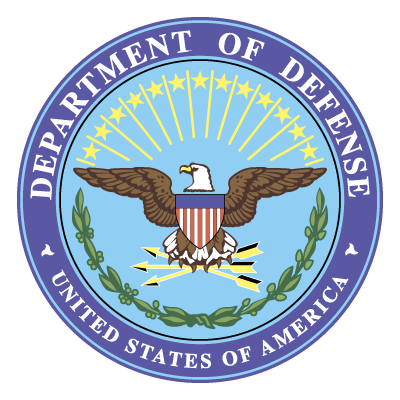Prescription Opiate Detox
What is the reason for prescription opiate detox? The leading cause of accidental death in the US is drug overdose. Today’s opioid crisis has tapped the shoulders of even the most unsuspecting victims. The US Health Resources and Services Administration reports that 116 people die daily from an opiate overdose. According to the CDC, nearly 40% of those deaths involved prescription opioids.
Approximately, 2.1 million people struggle with a prescription related opioid addiction. That number represents the US alone. With such an alarming epidemic on our hands, the need for comprehensive treatment and rehabilitation has increased tenfold. Prescription opiate detox requires not only physical, but emotional care to be successful and prevent a relapse.
By now, it’s no secret that there is an opioid crisis in the United States – but a number of recent studies paint an incredibly harrowing picture of just how serious this problem has truly become.
Despite the fact that the US makes up just 5% of the world’s population, it consumes roughly 80% of the world’s prescription opioid drugs. These drugs contribute to about 40% of all overdose deaths in this country, and in 2016 alone about 46 people died every single day because of them.
Prescription opioid addiction is an incredibly serious matter, and the right detox and treatment program requires an approach that is equally so. That’s why, at Bridges of Hope, we’ve made it our mission to utilize evidence-based practices to generate better outcomes for clients and to help them rid their lives of the impact of addiction once and for all.
The Hook of Prescription Opiates
Our body naturally produces opioid neuropeptides when we perform certain activities. Things like eating, having sex, running, or listening to music all cause the natural release of hormones and chemicals in our body. In turn, these activate the brain’s opiate receptors. Endorphins, for example, are hormones secreted by our body that are structurally similar to morphine and produce the same feelings of euphoria and wellbeing.
Why are prescription opiates so addictive? The answer is simple: opioids reduce pain and produce a euphoric feeling. They affect the brain the same way as heroin and morphine, attaching to the opioid receptors and triggering the body’s natural reward system that makes us feel good. This reward system also encourages us to repeat the action that caused us to feel so wonderful, even if the action could result in death.
Although the prescribing rate of opiates has declined since 2012, millions of Americans are still prescribed opioids like hydrocodone, oxycodone, fentanyl, morphine and codeine to treat pain. These are meant to be short-term solutions to ease suffering. The longer a patient uses the prescription opiate, the more tolerant they become to its effectiveness and the greater the chance of addiction and abuse become. Continued use slows down the body’s natural production of opioid neuropeptides. When this happens, patients may find themselves eager for relief and taking a higher dosage to achieve that euphoric feeling.
If you think you or a loved one may be abusing opiates, please seek help immediately and begin the process of prescription opiate detox. Signs of possible abuse include: sleep deprivation, pinpoint pupils, slurred speech, mood swings, confusion, clumsiness, and an increased dose needed to feel relief. Physical illness after discontinued use of the prescription opiate may also be an indication of dependency. In some instances, the person may not even realize that they have a problem.
Opiate Withdrawal Symptoms
Opioid withdrawal is extremely uncomfortable but is not usually life-threatening. Withdrawal symptoms can begin as soon as a few hours after a person has stopped using the drug and can last anywhere between one week to a month. The severity of withdrawal varies depending on the type of opiate and dosage. Early symptoms may include:
- Sweating anxiety
- Agitation
- Runny nose
- Aching muscles
- Teary eyes
- Trouble sleeping
Later withdrawal symptoms (within 72 hours) include:
- Drug cravings
- Depression
- Nausea vomiting
- Diarrhea
Typically, these symptoms are the cause for relapse if the person does not have the support they need during the uncomfortable time period it takes to get through withdrawal. There are medications available as part of prescription opiate detox treatment to help patients cope with these physical effects. Even after the first acute withdrawal symptoms subside, post-acute withdrawal can last up to two years. These symptoms are more emotional than physical and may include mood swings, anxiety, insomnia, low energy, or low enthusiasm.
Prescription Opiate Detox Treatment Options
Opiate addiction is a chronic disease with physical and emotional side effects. It needs to be treated comprehensively to avoid a relapse. In addition to medicine that can be used to alleviate withdrawal, therapy can be beneficial to help patients create healthy lifestyles, recognize triggers and manage them positively. After all, the intention of prescription opiate detox is to stabilize the individual so they are no longer dependent, physically or psychologically, upon the drug.
While medical detox from drugs may be relatively short, it can be extremely useful to combat any severe side effects or difficult withdrawal symptoms. There are several medications available, including buprenorphine, naloxone, naltrexone which are opioid antagonists, and lofexidine which is a newer non-opioid treatment.
Our Treatment Center Approach
At Bridges of Hope, we offer a two-pronged approach to opiate detoxification. First, our adult dual diagnosis facility is equipped to treat every level of American Society of Addiction Medicine protocols, from the initial detox process to aftercare support and beyond. Staffed by only licensed professionals, we focus on the techniques necessary to create a sustainable recovery as effectively as possible.
The Help You Need Has Finally Arrived
Likewise, our programs promote healthy, leisurely activities to help improve a patient’s general health as well. We find that when the forces of these two techniques are combined, those suffering from prescription opiate addiction are in a much better position to remain on the right path long after they’ve checked out and gone home.
Medical detox from drugs is only part of full recovery, however. A good prescription opiate detox program will offer individualized care, realizing that the underlying causes and required treatment are unique to each
Schedule A Visit
We Accept Most Insurance





Ready to Take the First Step?
Have a short call with one of our staff, and understand everything that you want to know before you make the decision. We look forward to helping you on your way to recovery.


 Verify Insurance
Verify Insurance
 Toll Free Call
Toll Free Call